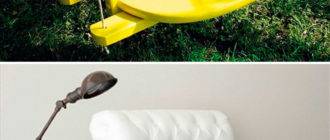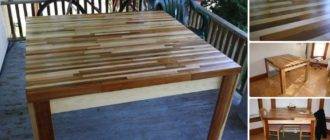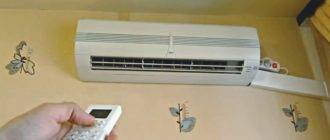Private houses in most variants have several floors. Even in the case of an actually one-story building, many equip an attic room on the roof, and here the question arises of the need for stairs in the house to the second floor.
How to choose the right model of interfloor structure in the conditions of a modern assortment of materials and technologies?

Interfloor stairs: types and characteristics
Requirements and tasks
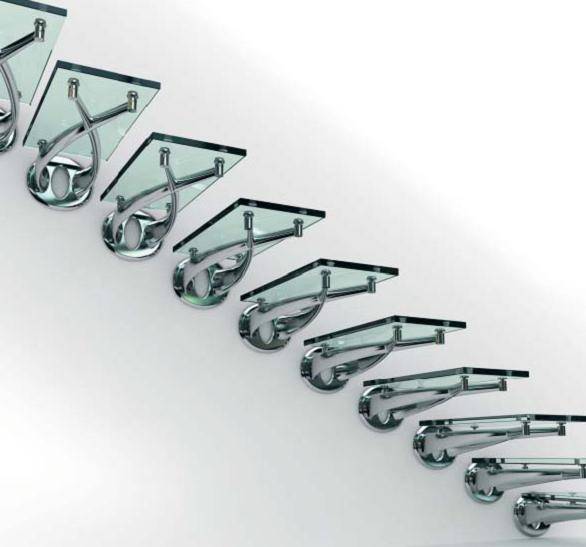
In order to correctly determine the criteria for choosing a particular structure, it is necessary to identify the tasks that this structure is designed to solve, and, in accordance with them, list the requirements for the structure. The staircase in the house to the second floor has a basic and self-evident function - it provides communication between floors for people to move.
A set of requirements follows from this task, which also follows a simple logic:
- The structure must withstand the weight of several people without any deformation, overvoltage, etc., that is, have a good margin of safety;
- Stairs for the house to the second floor are used constantly, therefore, some parts, such as steps and handrails, must have good wear resistance and consist of strong, stable materials;
- The structure will be subject to constant loads, causing oscillatory processes and vibrations, therefore, the joints of parts, parts and structural elements must be able to withstand such influences without loss of strength and fixing force;
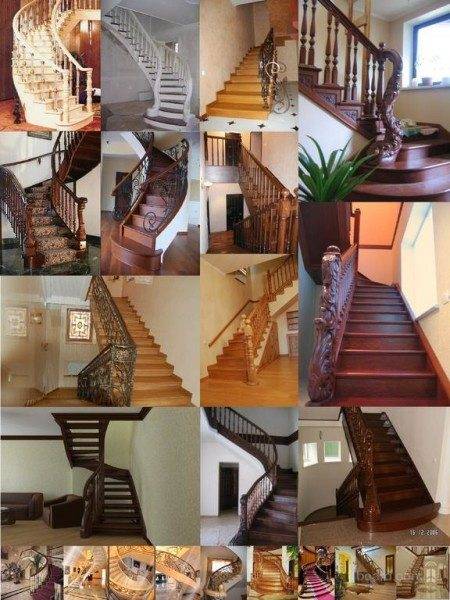
- The stairs will be used by people, so you need to take care of safety: fences and handrails must be reliable and durable, since a fall from a height of 2 or more meters is fraught with serious injuries;
- The structure should be convenient and comfortable for walking, it depends on the height and width of the steps, the steepness of the slope of the staircase, the width of the passage and the height of the railings;
- The staircase will be visible in the room, so it is desirable that it match the general style of interior decoration;
- The structure should be large enough to be comfortable to walk on, but not too bulky compared to the size of the house.
Important!
Since we are considering home stairs to the second floor, it should be said that first of all it is necessary to take care of reliability, safety and comfort, and only then strive for original forms and non-standard solutions.
Based on the listed requirements, it can be concluded that the main influence on the characteristics and properties of the product is exerted by the material from which the staircase is made, as well as its design and configuration. Consider the materials used in modern interfloor structures.
Basic materials
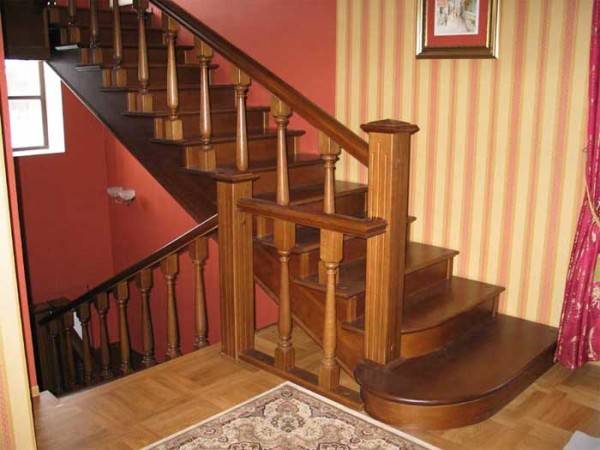
Today, a very wide range of materials of natural and artificial origin are used in construction.
For convenience, we have divided the most popular models into groups depending on the materials used:
- Wooden stairs.
- Metal constructions.
- Concrete structures.
- Combined models.
Wood
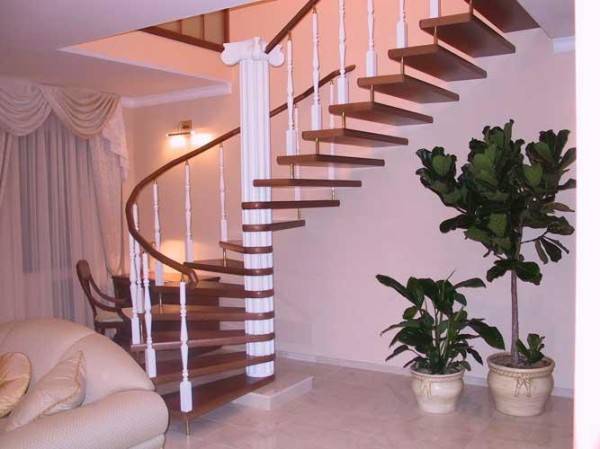
Wooden stairs have been used since time immemorial, but their popularity does not diminish from this.
This is due to a number of tree-specific benefits:
- The material is completely natural and safe, environmentally friendly and absolutely harmless;
- Wood has become familiar to humans, its properties are well studied and a whole host of methods of processing this material are known;
- Wooden products have an original color and pattern, a pleasant texture, they are warm to the touch, do not slip, smell nice and are easy to assemble;
- Wood is a relatively affordable and inexpensive material, especially in Russia, where wood reserves are truly enormous;
- Assembling a wooden staircase does not require heavy equipment and special tools;
- The material is lightweight, so there are no problems with its transportation and unloading;
- The tree fits perfectly into almost any interior, from classic to postmodern;
- Wooden stairs can be custom made and assembled by hand, which saves money.
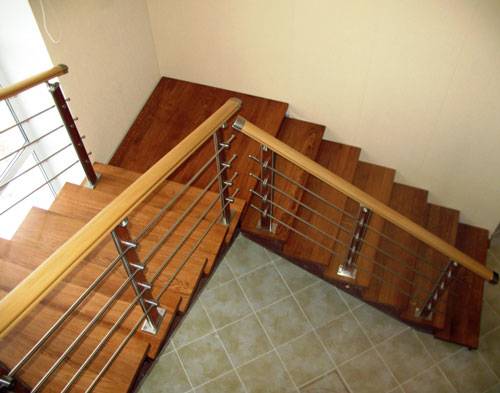
In some cases, wood products are an option. For example, a staircase to the second floor in a wooden house made of concrete or metal looks slightly out of place. This also applies to premises whose interior is designed in such styles as country, chalet, folklore motives or in accordance with one or another national tradition.
Important!
The wood should be selected carefully so that it does not contain defects, knots and cracks, has normal moisture and is not damp or freshly cut.
It is also important to choose the right type of wood: it is better to choose a durable material such as oak, beech or ash.
Metal
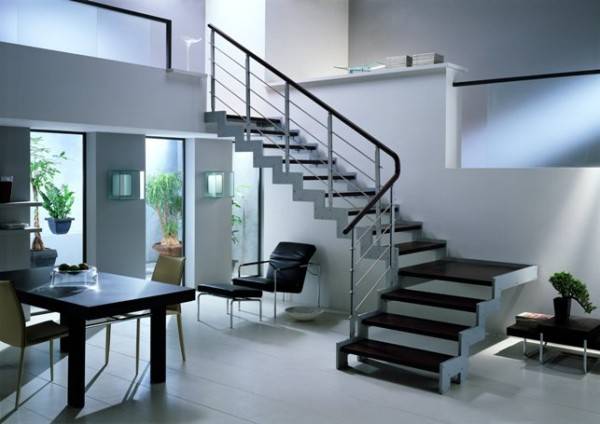
Metal is also very popular in modern construction. This is due to its strength, durability, safety and ease of handling. In addition, metal is actively used in combinations with other materials, since in some cases it is not easy to adequately replace it with something else.
Metal allows you to create strong and reliable structures, while there are many ways to fix and install it, from rivets to electric arc welding.
But there are also problems:
- Metallic products are generally unacceptable in classic and traditional design styles;
- Steel structures are capable of making a lot of noise and vibration when walking on them;
- Metal steps are cold to the touch, slippery and can cause injury if dropped on them;
- Metal structures look a little industrial, they resemble production workshops or machine rooms, which is not always appropriate.
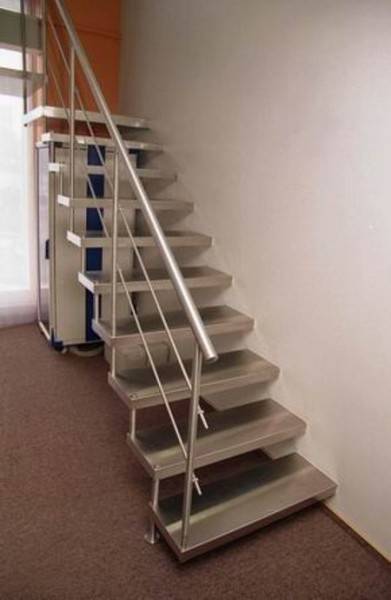
However, the problem of decorating steel and cast iron products can be solved: forged elements of a staircase are able to completely transform the structure, making it quite consistent even with classic interior ensembles. The only difficulty is the price of elements of artistic forging, which is high, despite the availability of machines for cold and hot metal working.
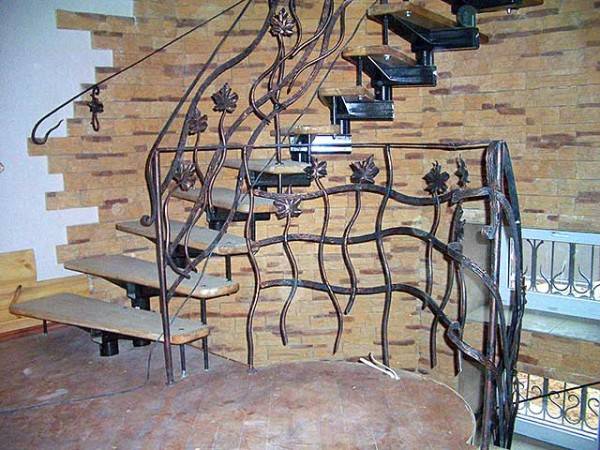
Important!
When choosing a metal structure, pay attention to the anti-corrosion treatment and the quality of painting, the reliability of galvanizing or nickel plating, if any.
The service life and comfort of using the product will depend on this.
Concrete
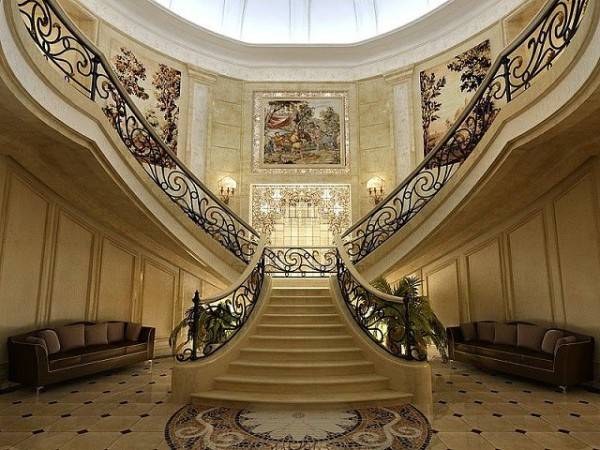
Reinforced concrete stairs are perhaps more common than others. It should also be said that this is the most reliable and durable material. Concrete products are reliable, solid, stable, durable and strong.
Concrete is often used to produce standard flights for access stairs, the shape of which, I must say, is the most convenient and safe. However, bulky marching models do not fit into every room: in houses with an area of less than 100 sq. M. these structures look out of place and even ridiculous.
Also, one should not forget about the considerable weight of such structures.Such stairs must be designed in advance (this can be extended to all types of stairs), otherwise after the start of work you may simply not be able to deliver the product to the desired point or install it. In such cases, they resort to making the stairs at the installation site, which is very difficult and expensive.
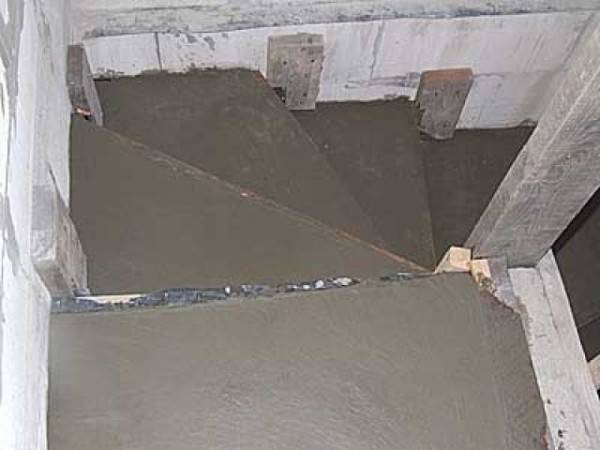
Advice!
Concrete structures should be chosen for large, spacious houses with an area of at least 100 square meters, then comfort and reliability will be combined with external beauty and harmonious internal architecture.
Combined products
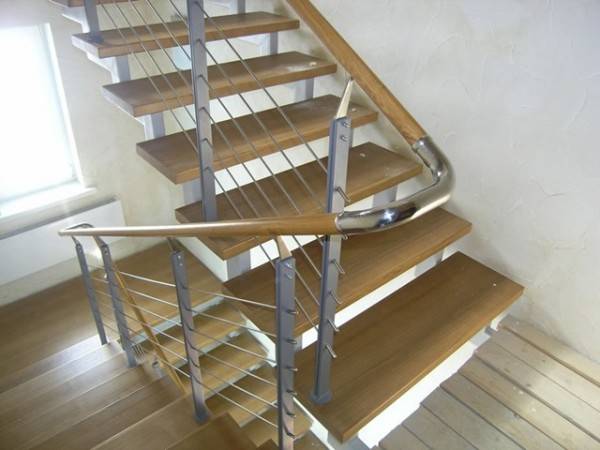
If we study houses with stairs to the second floor, we will see that most often there are interfloor structures consisting of several materials. Most often these are combinations of substances such as wood, metal, concrete, plastic and glass. You can also often find natural and artificial stone.
We see this approach as the most promising and expedient, since materials are used based on their characteristics and advantages, which allows us to create the most simple, durable, reliable and inexpensive structures.
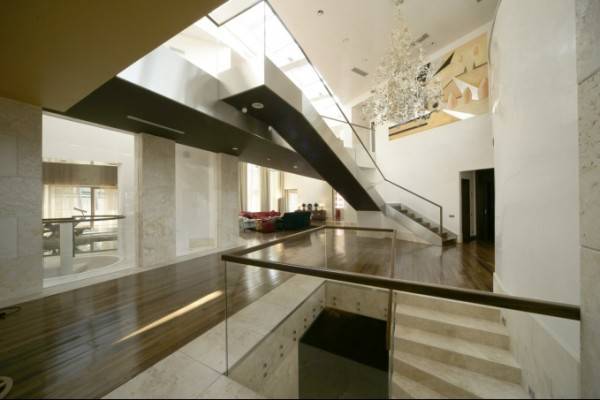
It seems obvious, but the use of materials for their intended purpose allows you to create strong metal frames and braids, comfortable and beautiful wooden steps and handrails, steel railings and railings, glass fillings and decorative elements, chrome handles and plastic covers.
At the same time, there is no irrational use of certain materials, everything is taken in the right amount and used for its intended purpose, as a result, the cost of the product is noticeably reduced and it becomes affordable and popular.
Also, this method of production allows you to use various designs of stairs: marching, turning, screw, monolithic, welded, modular, bolted, on bolts, with or without supports.

Today, various modular models are especially popular, since they allow you to create the most strange shapes and configurations, are easy to assemble, assembled on their own, and the assembly instructions do not imply the use of powerful or expensive equipment. An important factor in the popularity of modular products has become their low price with a rather pleasant appearance.
The choice of this or that design strongly depends on the characteristics of the room, interior design, financial capabilities of the customer and personal tastes. In general, marching models are considered the safest and most comfortable, but in small houses and rooms it is better to use rotary, spiral and spiral staircases, since in this case there is a good saving of space.
Output
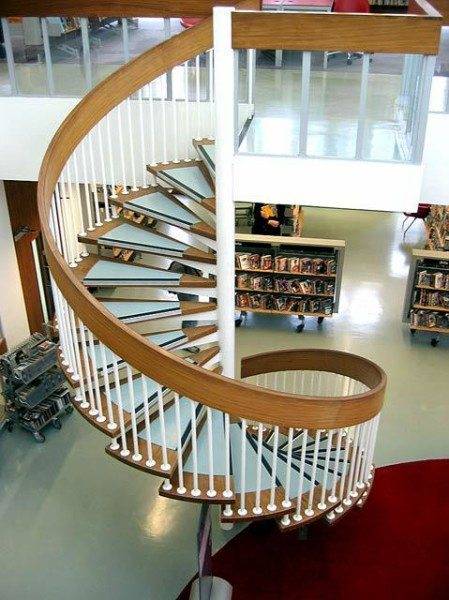
When looking for an interfloor staircase, you should carefully choose the material and structure of the structure, based on the characteristics of your home, financial capabilities and tastes. As a result of a comparative analysis, all other things being equal, we choose modular models from combined materials, since their price / quality ratio is noticeably higher. In the video presented in this article, you will find additional information on this topic.




